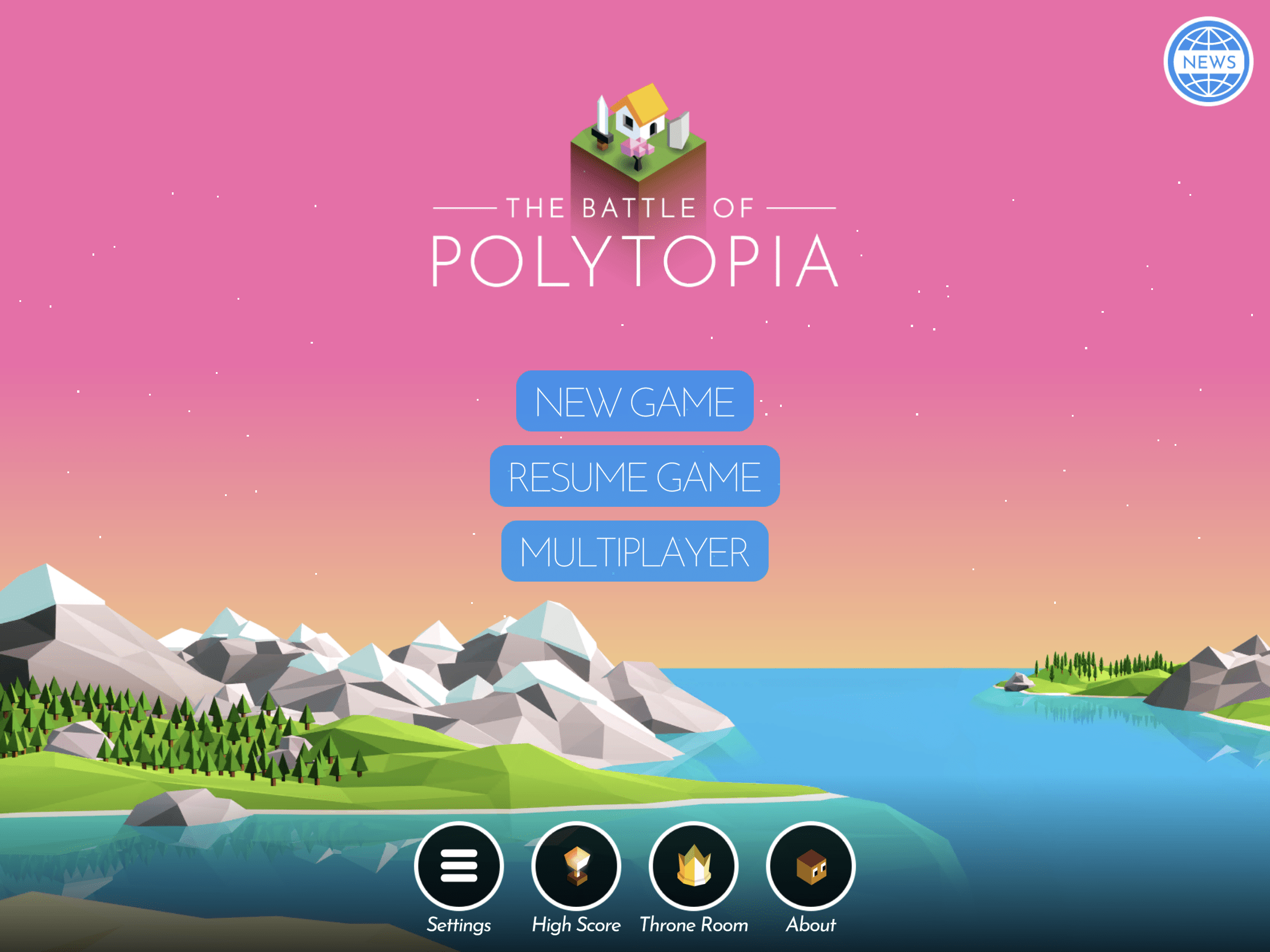Basic information
Name: The Battle of Polytopia
Creator: Midjiwan AB
Platform: Android & iOS. I usually play on my iPad.
Target audience: People who enjoy turn-based strategy games.
Formal elements
Players: The game supports single player (against CPU) and multiplayer (local or online) modes. For local multiplayer, you have to hand the device around between the players. For this critical play, I will focus on the single player mode, where you can complete with up to 3 CPUs (for a total of 4 players).
Objectives: Eliminate the cities of all opponents to win.
Rules & procedures: Each player starts off with 1 city and 1 base warrior unit surrounded by fog of war. Players then take turns exploring the map, expanding territory, exploiting resources, and eliminating opponent units. During their turn, players can perform any number of actions, which typically cost a number of stars (an in-game currency), given certain limitations. For example, you can create 1 unit per city per turn (units cannot be moved on Turn 0), and cities can only field a certain amount of units (depending on its level). Stars can be used to create units, mine resources, and unlock new abilities on the skill tree. The skill tree allows to build different units / structures, mine different resources, traverse different terrain, etc.
Resources: The main in-game currency is the star, which can be used to create units, mine resources, unlock abilities, and upgrade cities. The more cities and the higher the levels of the cities, the more stars you get per turn (although having more cities also makes unlocking new skills more expensive). Secondary in-game resources include: skills (from the skill tree), units (which can attack enemy units and capture enemy cities), and raw materials (wood, grain, mines, fruit, etc.).
Boundaries: Polytopia is played on a square, grid-like, bounded map. Various terrain (mountains, shallow waters, oceans, forests, etc.) limit the movement of your units. There is also fog of war, which obscures most of the map until it has been explored.
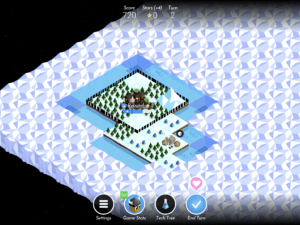
Outcomes: You win if you eliminate all other players. You lose if you are eliminated, which happens if opponent units capture all of your cities.
Types of fun
For the single player mode, challenge is Polytopia’s dominant aesthetic of fun. The joy of trying to best challenging opponents by developing good strategies makes you want to replay the game over and over again. However, this type of fun is partly impeded due to game imbalances. Below is a more detailed breakdown.
Game balance
Polytopia has great pacing. Compared to other turn-based strategy games like Civilization, PT is more simplistic and beginner-friendly, and you can easily adjust the CPUs’ difficulty level.
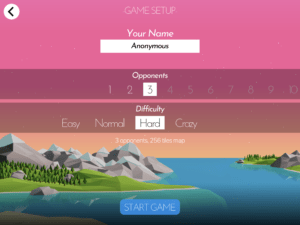
However, PT is an asymmetric game because it offers 4 “tribes” for the player to choose from. While the game board is randomly generated, the tribe you choose (Bardur, Xin-Xi, Oumaji, and Imperius) affects your starting terrain, surrounding resources, unlocked tech, and base unit.
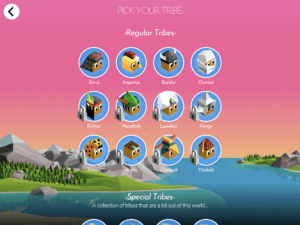
I’d argue that Bardur is disproportionately stronger (to the detriment of the game’s replayability) than the other tribes for several reasons. Its surrounding terrain consists of lots of wild animals and forests, and the occasional fruit and fish. It also starts with the Hunting tech unlocked, making it 1 of the 2 tribes that can upgrade its capital on Turn 0 (the other being Imperius, which starts with Organization and has terrain with fruit). Doing so boosts the stars per turn by 2, which is an incredible early-game advantage. The Hunting tech unlocks Forestry, then Mathematics (catapults and sawmills) on the tech tree. Forestry and sawmills are both highly exploitable for Bardur, and can result in a significantly higher income per turn very early-game, affording the Bardur players an opportunity to stay steps ahead of all other tribes for the rest of the game.
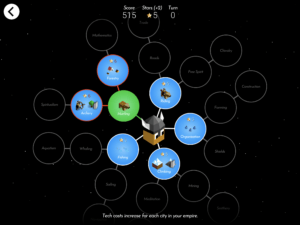
Meanwhile, while Imperius is also a solid choice, it falls behind Bardur because its diverse terrain does not compound with any easily unlockable tech. Finally, both Xin-xi and Oumaji have serious drawbacks. Playing Xin-xi almost always confines you to a defensive strategy. Oumaji players are handicapped by the resource scarcity of desert terrain and, while they do start off with more mobile cavalry units, their only shot at an early win is an all-out rush (which you almost assuredly can’t bounce back from). Thus, PT is not well balanced as an asymmetric game because it heavily favors certain tribes over others.
To its credit, PT does allow for different lines of strategy. Players can play defensively with ranged units (archers and catapults) and defenders, or aggressively with groups of riders and knights. It also features pretty good balance between game objects (such as offensive units). For example, knight units can easily decimate infantry and weaker cavalry through chain attacks, but can be effectively stalled by well-placed defenders which boast high HP and counterattacks. However, none of this suggests that players are always equally free to choose between different strategies. In face, tribe-related imbalances often close off all but 1 feasible general strategy. For example, if a Xin-xi player waits to unlock aggressive knight units, he will likely be boxed in and overwhelmed by Bardur or Imperius CPUs.
All these downsides are further exacerbated by the fact that PT games are often decided fairly early. Typically, economical advantages assure the victory of one tribe by Turn 10-15. While this can be seen as a good feature (because matches are quick), it’s quite frustrating to know you have almost zero chance of bouncing back from a disadvantageous position.
Moments of particular success or epic fails
Successes: Playing defensively, it’s very rewarding to stall and repulse enemies with well-placed ranged units. Playing aggressively, hitting opponents with decimating cavalry charges are extremely satisfying.
Fails: As previously mentioned, I often quit games and start new ones because, after a certain point, it feels futile trying to come back from a disadvantageous position.
Things I would change to make the game better
I would definitely adjust the terrain randomizer (and perhaps even the starting skills) to balance the tribes. Fixing this feature will make the game much more balanced. When players start off on relatively equal footing, they can better channel their efforts into deciding which strategies to pursue because there will be more strategies they can realistically choose from. This will make the game much more replayable.


